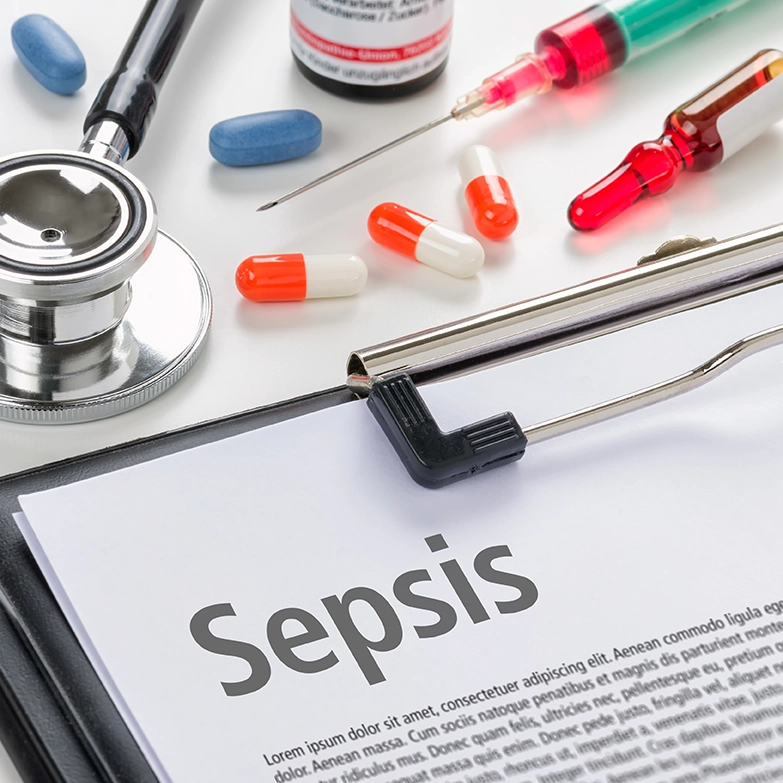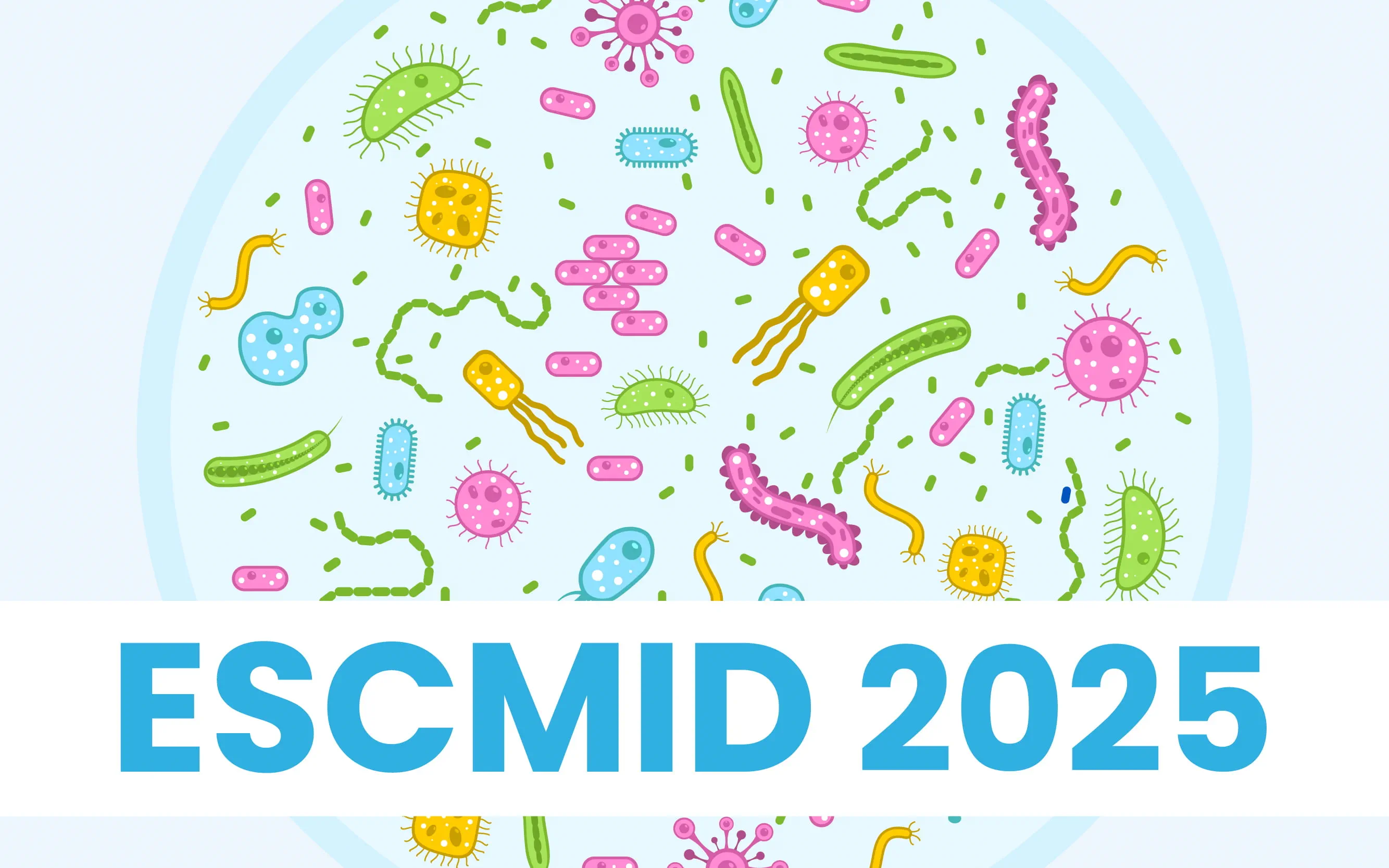ESCMID 2024: How Can Current Rapid Diagnostic Tests Support Antibiotic Stewardship
The editorial in Lancet Infectious Diseases presents a compelling argument regarding antimicrobial resistance (AMR) as a manifestation of global inequity between the global South and North. The stark contrast is evident when examining the European map of resistance. This inequity extends to handling public health and citizens' rights at both European and global levels, a disparity that must no longer be tolerated. One major oversight highlighted is the underestimation of the clinical burden posed by AMR. For instance, post-sepsis syndrome exemplifies the long-term repercussions beyond initial hospitalization. A study in Germany tracking 2500 patients revealed alarming statistics: a 17% mortality rate and 75% readmission rate after six months, predominantly associated with sepsis caused by antimicrobial-resistant bacteria. The Organization for Economic Cooperation and Development (OECD) underscores the importance of antimicrobial stewardship in combating AMR. Key measures include delayed prescribing in communities, enhanced stewardship in hospitals, and prioritizing rapid diagnostic tests. The OECD forecasts significant benefits from these interventions, estimating that delayed prescribing could prevent over 1800 deaths annually, while widespread use of rapid diagnostic tests could reduce mortality by 1700 yearly. The discussion centered around the cost-effectiveness ratio (CE ratio) concerning interventions like improved hand hygiene and rapid diagnostic tests (RDTs) in healthcare settings. The estimation suggested that hand hygiene could achieve close to 100% effectiveness when properly implemented, making it a significant factor in antimicrobial stewardship. However, the effectiveness of RDTs dropped to around 80%, posing a question regarding their implementation in settings with low compliance with hand hygiene or lacking effective antimicrobial stewardship intervention. The speaker raised concerns about prioritizing interventions with lower effectiveness, like RDTs, over those with stronger evidence of efficacy. They pointed out the importance of distinguishing between the roles of various interventions within antimicrobial stewardship, emphasizing that RDTs should support, rather than lead, the effort. They highlighted a common misconception that introducing rapid diagnostics automatically aligns with diagnostic stewardship, which aims to reduce inappropriate diagnostic practices and antibiotic use. An example was provided wherein avoiding unnecessary urine cultures for asymptomatic bacteriuria could significantly reduce antibiotic misuse in hospitals, as evidenced by various studies showing a reduction of almost 70%. Rapid diagnostics hold potential as a valuable component of diagnostic stewardship programs, but their integration requires careful consideration due to their multifaceted impact. Incorporating rapid diagnostics alters clinical practices, surveillance reporting, and healthcare-associated infection metrics. A structured approach such as PICOT (Population, Intervention, Comparison, Outcome, Time) can be employed when evaluating its significance for patients. Population demographics are crucial, encompassing diverse settings like outpatient, emergency rooms, intensive care units, medical wards, and long-term care facilities. Age, particularly in underserved populations, pregnant women, children, or oncological patients, necessitates a tailored assessment of clinical outcomes. The intervention spectrum ranges from bacterial infection targeting to various detection methods like antigen or antibody detection and single or multiple PCR assays. Comparatively, the rapid diagnostic's frequently cited comparator is MALDI-TOF, although other molecular techniques or conventional laboratory methods are viable alternatives. Clinical benefits, such as symptom improvement, mortality reduction, shortened hospital or ICU stays, lowered rehospitalization rates, and enhanced quality of life, underscore its significance. However, caution is warranted regarding antimicrobial usage reduction, ensuring alignment with patient-centred outcomes and community-specific antibiotic dispensation practices. The content discusses the critical aspects of antibiotic prescribing and stewardship, emphasizing the four fundamental pillars that guide this process: patient assessment, bacterial knowledge, understanding of the drug's impact, and societal implications. Each prescription influences the patient's well-being and broader community concerns like antibiotic resistance. The key question is integrating rapid diagnostics into antibiotic stewardship for better decision-making. After considering these pillars, the next step is to incorporate surveillance data from the hospital. This data informs which diagnostics and drugs are available locally, shaping the final antibiotic prescription. The effectiveness of antibiotic stewardship is evidenced by a systematic review and meta-analysis of 32 studies, demonstrating a 35% reduction in mortality with guideline-adherent empirical therapy. Additionally, there was a significant decrease (nearly 50%) in infections caused by multidrug-resistant gram-negative bacteria, including reductions in ESBL (Extended-Spectrum Beta-Lactamase) cases by 37%, MRSA (Methicillin-Resistant Staphylococcus Aureus) by 37%, and CDI (Clostridioides difficile Infection) by 32%, highlighting the tangible impact of stewardship efforts. The ISAC survey encompassed responses from 81 participants across 31 nations. One key query focused on measuring test impact, a practice typically recommended. Surprisingly, only 37% of those administering rapid tests evaluated their impact. Predominantly, assessments were confined to infection control and prevention outcomes. However, Screening primarily served precautionary and isolation measures, with only half of the 37% assessing generic impacts on antibiotic stewardship. Challenges to widespread clinical adoption include cost, lack of training, and suboptimal patient care pathways. Addressing these challenges requires evaluating clinical evidence, particularly from systematic reviews and meta-analyses since 2019, to ascertain the certainty levels surrounding rapid molecular test results. Ultimately, before altering treatment or care protocols, clinicians require sufficient accuracy and assurance so that test results do not affect patient outcomes. The speaker discussed the utility of RDTs for various infections based on clinical syndromes. They focus on upper respiratory tract infections and sore throats, referencing meta-analyses and clinical trials. For upper respiratory infections, a 2017 meta-analysis of 14 studies found that RDTs did not significantly impact antibiotic use, duration, admission rates, mortality, adverse events, or ICU admissions. However, a 2019 Cochrane review suggested that RDTs might reduce antibiotic prescriptions by 25% for sore throats. Nevertheless, no difference was observed in actual antibiotic dispensing. The speaker highlights the need for more studies, especially focusing on patient-centered outcomes and variability among different groups, such as adults and children. They note that this information was unavailable four years prior.
Two meta-analyses have been conducted on various aspects of rapid testing and its impact on patient outcomes in emergency room settings. The first study examined the influence of rapid flu testing on acute respiratory infections, specifically focusing on using antivirals and antibiotics among over 1000 matched patients. Results indicated increased antiviral usage and decreased antibiotic usage in patients who underwent rapid testing. However, no other outcomes, such as return visits or impact on work, were addressed. Moving on to lower respiratory infections, another meta-analysis considered randomized clinical trials and quasi-randomized trials up to 2022. Rapid testing for respiratory viruses did not significantly affect antibiotic usage, hospital stay length, or emergency room return visits. The introduction of syndromic molecular testing for community-acquired pneumonia in a one-center study showed increased pathogen-directed treatment rates but no significant changes in antibiotic provision or clinical outcomes. Additionally, a Cochrane systematic review and meta-analysis explored the impact of rapid antimicrobial susceptibility testing on bloodstream infections. Results indicated no significant differences in clinical outcomes regardless of whether genotypic or phenotypic testing was utilized. The conclusion drawn was that the theoretical benefits of rapid susceptibility testing did not translate into improved mortality rates, time to discharge, or time to appropriate antibiotic treatment based on randomized clinical trials.
Another study published after the Cochrane review presents findings from a multi-center randomized clinical trial comparing MALDI-TOF with rapid organism identification in 448 patients. Rapid diagnostics are associated with institutional antibiotic stewardship, reducing the median antibiotic modification and escalation time. However, it leads to increased broad-spectrum antibiotic use in low-resistance settings without impacting patient outcomes. Given the study's limitations in detecting clinical differences and assessing antibiotic appropriateness, it may not be applicable in high-endemic settings for AMR in clinical practice. The study discussed examines the impact of implementing rapid multiplex PCR for bloodstream infections, revealing significant improvements in early de-escalation and time to appropriate therapy within 48 hours. However, no difference was noted in 30-day mortality or other clinical outcomes among the 4,000 patients studied. Similarly, a meta-analysis on urinary tract infections found no significant differences in antibiotic use or other clinical measures between rapid test and standard care groups. Despite the lack of clear benefits in mortality or clinical outcomes, guidelines such as those from ERS/ESICM/ESCMID/ALAT recommend cautious use of rapid tests, particularly in cases where non-standard antibiotics are being considered due to limited quality evidence. NICE guidelines also advise against routinely using rapid diagnostic tests for respiratory tract infections to guide antibiotic prescribing decisions, citing low-quality evidence. However, despite clear evidence for healthcare-associated pneumonia in high-risk populations, especially post-surgical patients, rapid tests may be considered.
The document updated to February 2020 regarding the SepsiTest from NICE concludes that there's insufficient evidence to recommend its routine adoption, although there's unanimous agreement among professionals that a reliable rapid test would greatly benefit clinicians. Regarding the point-of-care test for urinary tract infection updated in May 2023, it's similarly stated that rapid tests cannot be recommended for routine use early in patient care in the UK and presumably in other countries, given the global consideration of the evidence. The discussion then shifts towards the need for expedited methodology in incorporating evidence into guidelines and clinical practice. The speaker emphasizes the necessity of reducing the lag time between evidence availability, guideline publication, and implementation in patient care. The Value-Dx project is highlighted as an attempt to address this issue, particularly focusing on community-acquired pneumonia diagnosis by general practitioners. Instead of developing clinical algorithms post-data collection, the project utilized statistical analysis, AI, and machine learning to generate over 900 candidate algorithms, subsequently validated in patient databases worldwide. The envisioned future involves automating data extraction and analysis, linking with surveillance systems, and updating algorithms based on real-time patient data. The current evidence suggests that rapid diagnostic tests do not significantly impact clinical outcomes in adult patients across various settings. Therefore, their implementation should be integrated into structured antimicrobial stewardship, diagnostic stewardship, and infection prevention and control programs. It's crucial to establish and implement diagnostic stewardship programs before introducing rapid diagnostic tests. For future studies, consider multi-center trials with diverse populations, particularly focusing on long-term care facilities and primary care settings. Factors such as patient symptom evolution, transferability of results, health-related quality of life, short and long-term complications, implementation science, and the impact on surveillance data should be thoroughly examined.
European Society of Clinical Microbiology and Infectious Diseases (ESCMID) 2024, 27th April–30th April 2024, Barcelona, Spain




